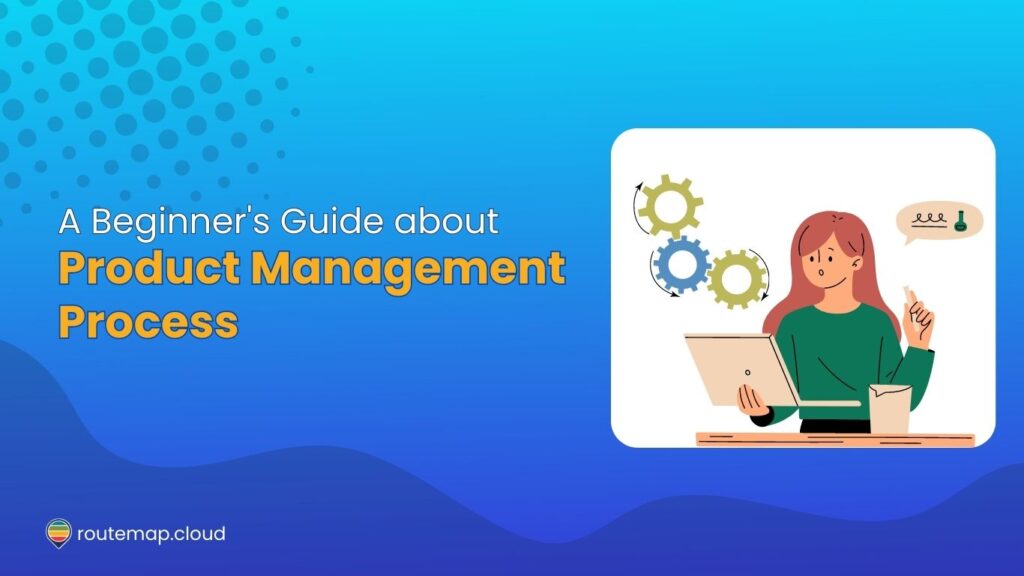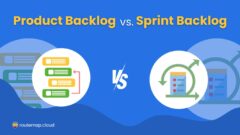The concept of a ‘product’ extends beyond the physical or digital object you offer to customers. It incorporates the experience that comes with using the product, the benefits it provides, and the value it delivers. And that is where the product management process comes in.
It is one crucial cog in the wheel of creating successful products. Moreover, it requires strategic planning, development, marketing, and continuous evaluation, all of which help translate an idea into a marketable product.
What is a product management process?
Product management is a pivotal function within an organization. It forges a strategic and tactical route for a product, aligning each phase of the product’s lifecycle with the overarching business objectives.
Additionally, the process necessitates identifying potential product opportunities, developing a roadmap, coordinating with various teams, and delivering a product that aptly meets market demands and customer expectations.
The main stages in the product management process
The product management process encompasses a series of stages that collectively drive the creation and delivery of successful products. While the specifics may vary depending on the organization and industry, the core stages remain the same.
1. Idea generation
This is where you can find novel product concepts. Through brainstorming, market research, user feedback, and competitive analysis, you can gather and evaluate potential product ideas.
Besides, the product management team should consider some factors before selecting ideas for development. Those factors include feasibility, alignment with business goals, and potential market demand.
2. Product development and roadmapping
Once an idea is chosen, it transitions into the development phase. This stage involves designing the product’s features and functionality, creating a prototype, and testing for user acceptance and feasibility.
Here, the product roadmap plays a critical role.
It is a strategic document that outlines the product’s vision, direction, priorities, and progress over time. However, this stage puts roadmapping come first, not prioritization. It is because it focuses on the objectives and goals to advance product vision rather than a feature debate.
Moreover, this roadmap serves as the guiding light for various stakeholders, setting clear expectations and fostering alignment across different teams. The product management team, along with the engineering and design teams, uses the roadmap to drive the product’s creation.
That is why you should find an excellent roadmapping tool, especially when working on Jira. And Routemap will be a perfect solution for you and your organization.
With this app, you can visualize your product roadmap in the most understandable way for all stakeholders. Then, you can combine it with prioritization to ensure that everyone is going toward the same goal.
3. Product launch
This stage involves the product’s debut in the market. It demands meticulous planning around marketing strategies, pricing models, and distribution channels. The product management team ensures the product is correctly positioned in the market.
Besides, its unique selling proposition is effectively communicated to the target audience.
4. Growth and expansion
Post-launch, the focus shifts towards growing the product’s reach and improving it based on user feedback and market trends. At this stage, the product management team drives product growth, increases market share, and ensures customer satisfaction.
Not to mention, the team does all of those while updating and revising the product roadmap as necessary.
5. Product decline or iteration
Every product experiences a lifecycle, and its demand may eventually decline due to market saturation, evolving consumer preferences, or the emergence of superior alternatives.
In these scenarios, the product management team either revises the product based on the roadmap, making significant improvements or retires it and diverts resources to other products or new ideas.
The role of the Product Manager in the product management process
The product manager is the anchor in this process. They guide the product through each stage of the lifecycle, armed with a deep understanding of the market landscape, customer needs, and business objectives.
They serve as the vital link between different teams, ensuring seamless communication and alignment. Product managers often play multiple roles, including strategist, analyst, marketer, project manager, and more.
Additionally, they define the product vision, develop and adjust the roadmap, make data-driven decisions, and communicate with stakeholders, ultimately shouldering responsibility for the product’s success or failure.
Sometimes, the role of a product manager and a project manager can be confusing and overlapping one another. Still, each role focuses on different aspects and working together to reach the final goal.
Final thoughts
The product management process is a guiding framework for organizations to develop and launch successful products effectively. From ideation to post-launch evaluation, each stage plays a crucial role in the product’s journey.
By fostering cross-functional collaboration, embracing agile methodologies, and continuously gathering user feedback, product managers can drive innovation, enhance customer satisfaction, and achieve business objectives.
With the right processes and strategies, organizations can navigate the product management process confidently and deliver products that resonate with their target audience, driving sustainable growth.





4 Comments. Leave new
Someone essentially assist to make seriously posts I’d state.
That is the very first time I frequented your website page and so far?
I surprised with the research you made to make
this actual submit incredible. Great activity!
Thanks for another excellent post. Where else could anyone get that type of information in such an ideal manner of writing?
I’ve a presentation subsequent week, and I’m at the
look for such info.
This is very attention-grabbing, You’re an excessively professional blogger.
I have joined your rss feed and sit up for in search of more of your
fantastic post. Also, I’ve shared your site in my social networks
I every time spent my half an hour to read this blog’s content everyday along with
a mug of coffee.